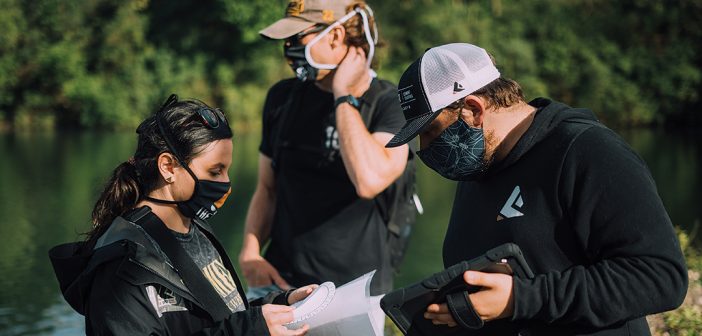The site of The Forge: Lemont Quarries adventure park outside Chicago had several things going for it. The 300 acres in Lemont, Ill., offered proximity to hundreds of miles of mountain biking and running trails. It was easy to access via trains and highways. The area already drew adventure seekers from the entire metropolitan area. Unfortunately, the park’s creators also faced a challenge: the tract was a dilapidated industrial site in a notoriously industrial part of the county.
The site consisted of a retired quarry, bordered by Chicago’s historic sanitation drainage canal, and had been invaded by non-native plant species. It evoked thoughts of “Superfund” more so than “super fun.” But The Forge creators and friends Jeremie Bacon, Chris Gladwin, and Bart Loethen knew they could make it work.
According to Bacon, the city of Lemont had believed for years that the park land was an “untapped asset.” From the first development meetings in 2014, the city and The Forge founders were aligned in their vision of the space as a place for campsites, boating, trails, public access, and adventure park assets.

Screen image of a safe full of valuables.
The land would require significant restoration to achieve that vision, though. And as planning progressed, restoration became key in shaping the park’s mission. Educating visitors about the history and rejuvenation of the land is one of the park’s three guiding pillars.
Every aspect of the park speaks to at least one of three founding principles: exhilarate, educate, and entertain. Some features of The Forge, like its nascent augmented reality (AR) offerings, hit all three pillars at once, driving education, entertainment, and exhilaration through virtual play and storytelling. AR, in fact, might be the most unique aspect of this most unusual park.
But we’re getting ahead of the story, which starts with the adventure park itself.
EXHILARATE
The park has many traditional elements and offerings, and these exemplify the “exhilarate” pillar. The Forge: Lemont Quarries hosts what it claims is the largest aerial challenge course in the world, Eight Towers Adventure. This challenge course sprawls across 10 acres. Hundreds of elements lead from five “hex towers,” bridged by a total of two miles of zip lines. The Two Towers Kid Zone, with lower, netted elements like climbing nets and balance beams, offers a less intense adventure experience for families with kids under 13.
Located near the Cook County Forest Preserve, part of Chicagoland’s premier trail system, the park also boasts six miles of cut trails across its mountain biking and BMX sections. “Twenty miles of trails is the goal,” says Bacon, with five miles of new trail coming this winter.
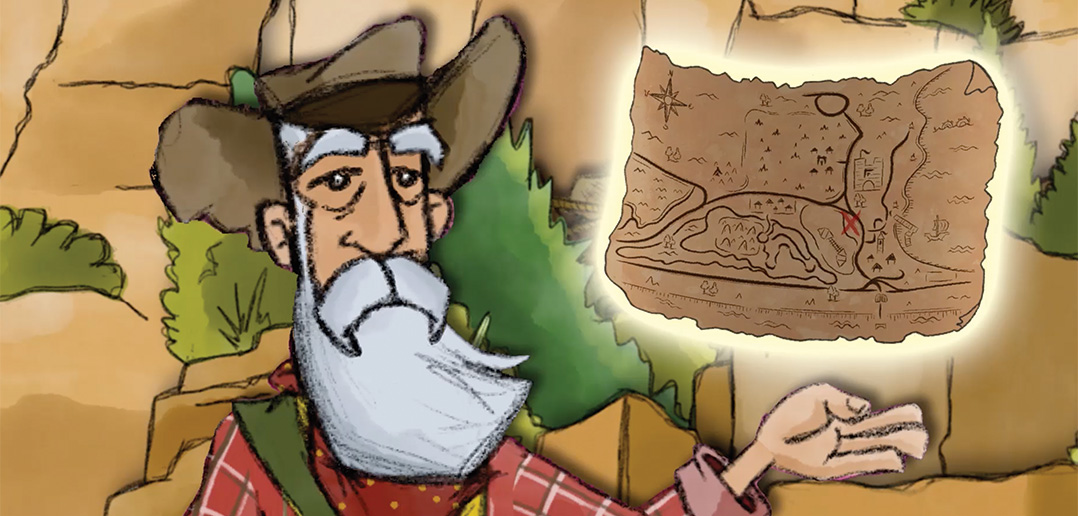

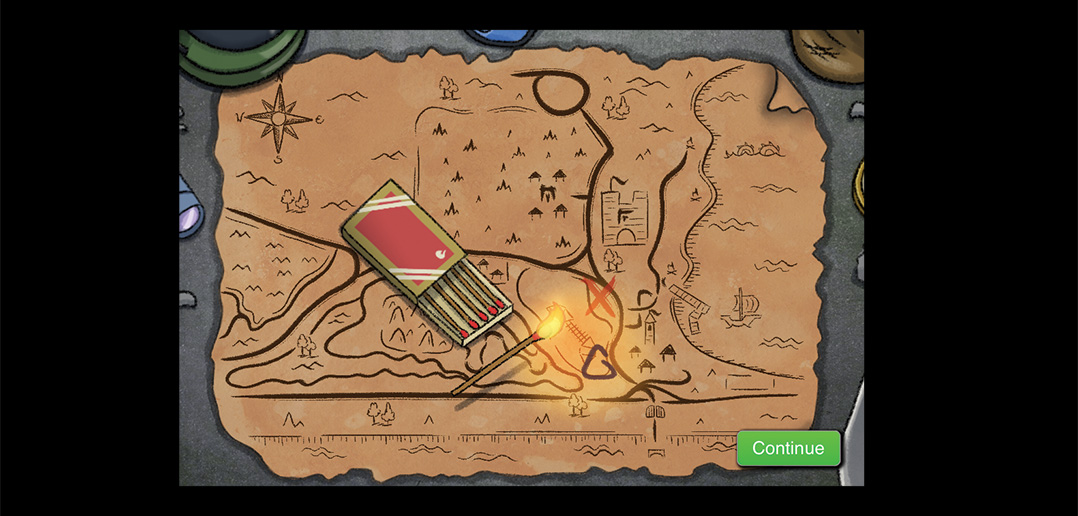
Above, top to bottom: Characters and maps help guide players as they follow clues; tablets make it all possible.
The park is home to six quarry lakes, providing access for boating, fishing, and kayaking. There is tactical laser tag as well, set up like a paintball venue but without the paint. The laser tag offerings extend beyond standard shoot-’em-up style games to include contests like team deathmatches, king of the hill, team snipers, and zombie apocalypse.
As an adventure park, The Forge: Lemont Quarries offers a lot.
ENTERTAIN
For more casual entertainment, The Forge serves up a series of events and a variety of food. All summer long, guests can catch movies and concerts at the park’s “The Mount” outdoor venue. Even during 2020, amid the Covid-19 pandemic, the park managed to keep its event series active by instituting a grid-based social distancing layout for the venue.
At its open concept restaurant, The Foundry, guests can sit down for a full meal or simply grab food from the market to fuel whatever they’re pursuing in the park. Guests looking to hang out can also throw back a beer, brewed onsite in partnership with Pollyanna Brewery, a Chicagoland-based craft brewery.
EDUCATE
The park fulfills its mission to educate in multiple ways. The overall design and how it integrates its offerings into the landscape—from the high-octane adventure park features to the food and beverage structures—help educate guests about the area’s ecological and industrial past.
To make its educational content more adventurous, though, the park uses augmented reality technology to create experiences that keep guests moving through the park. The AR experiences tell stories that exhilarate, entertain, and educate.
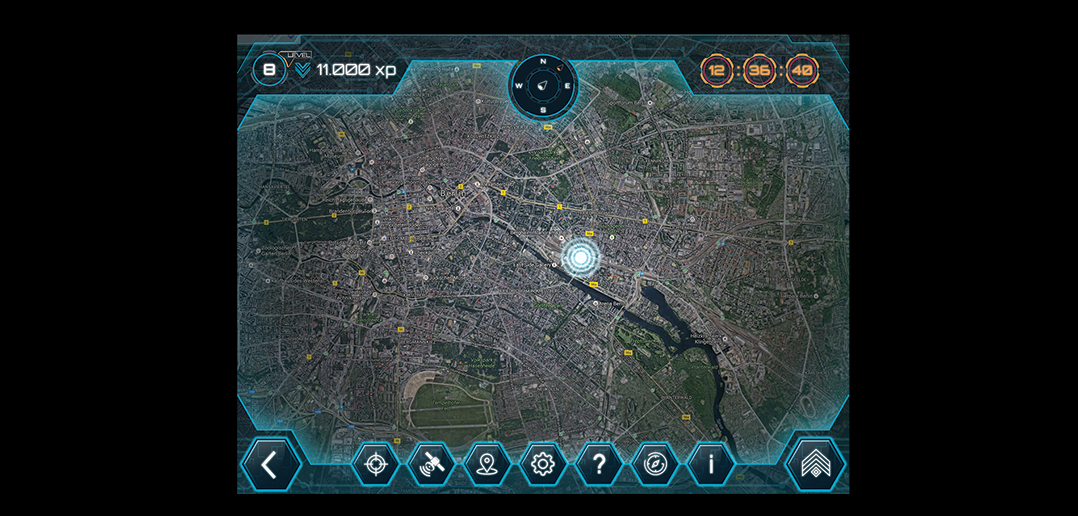
Operation Mindfall tracks players via GPS on a live map.
“Because we have this unique space and concept, we have an environment for guests to come and learn,” Bacon says.
For many adventure parks, integrating features with the landscape can be simply a matter of using local materials and highlighting environmental features, such as treetops and ridgelines. For The Forge, the abandoned industrial site—a formerly “desolate wasteland,” says Bacon—presented more of a challenge.
Highlighting its heritage. The designers solved that not by painting over that industrial heritage, but by embracing it. That heritage informs the park’s esthetic. The adventure park towers are built from dark brown steel, in former times the predominant material of the area. “The towers look like they’ve been here forever,” says Bacon. “They blend into the environment.” From the air, the site might not look all that different from when the parcel was an active quarry.
To emphasize the site’s industrial origins, buildings at Lemont Quarries are constructed from old shipping containers instead of more traditional materials. “It looks like a train crashed and the containers were scavenged to build the park,” says Bacon. “It all needed to look like it’s meant to be here.” That scavenged look highlights the background of the area and the impact industrial development had on the environment.
As part of the clean-up effort, The Forge team undertook a number of conservation projects to nurture the land back to health. The park’s Friends of the Forge organization, a volunteer group, assisted in the removal of 10 acres of invasive species (mostly buckthorn and honeysuckle). Long-term, the group hopes to bring the ecology of the entire area closer to its pre-industrial, natural state.
AUGMENTED REALITY AT THE FORGE
Augmented reality helps visitors experience all of this. The concept, ironically, is to use personal digital devices—which tend to focus users’ attention narrowly on a small screen—to engage visitors in the world around them.
“We are all tethered at the hip to our devices,” says Bacon. “I’m a believer that digital is eating everything.”
He’s right, of course. According to the CDC, kids between ages 8 and 18 now spend an enormous amount of time—the equivalent of 114 days per year—looking at screens. That’s almost a third of a year.
The Forge: Lemont Quarries takes advantage of that predilection for screen time with outdoor, augmented reality escape-room-style adventures that turn the local ecology and industrial history into entertaining, and educational, activities. For the founders of The Forge, the growth of digital isn’t a threat to outdoor recreation, but an opportunity to engage visitors differently. Bacon saw a chance to bring tech into the physical experience guests have at The Forge, and he leapt at it.

Digital and real-life problem solving keep players engaged.
“We wanted to be the first park in the country to have AR outside video games, so we deployed them,” says Bacon.
When The Forge opened last July, it launched two digital scavenger hunt games. These are based on the software platform by Cluetivity and include Magic Portal and Operation Mindfall. (For now, Bacon’s company Konverg Entertainment is the exclusive U.S. provider for Cluetivity’s AR games.) These part-digital, part-physical games invite guests to solve puzzles as they move around the park, using iPads to locate clues. As they do, participants interact with fellow guests, and compete against other teams attempting the same goal.
This type of tech deployment isn’t cheap, says Bacon. But the experience is a competitive advantage for the parks who can swing it, he argues.
Taking games to the next level. The scavenger hunts are just a first step, says Bacon; the future is in true AR, he believes. “You should be able to scan a QR code to kick off a digital experience or game,” he says, “something that connects you to the park.”
Three or five years down the road at The Forge, that something could be a more advanced AR scavenger hunt that has guests following the trail of an old prospector or quarry worker, while also learning how buckthorn got introduced along the way and finding examples of it. Or it could be a canoe race along the waterways, with your device showing you leaderboards with the times of other guests who followed the same route that day or week.
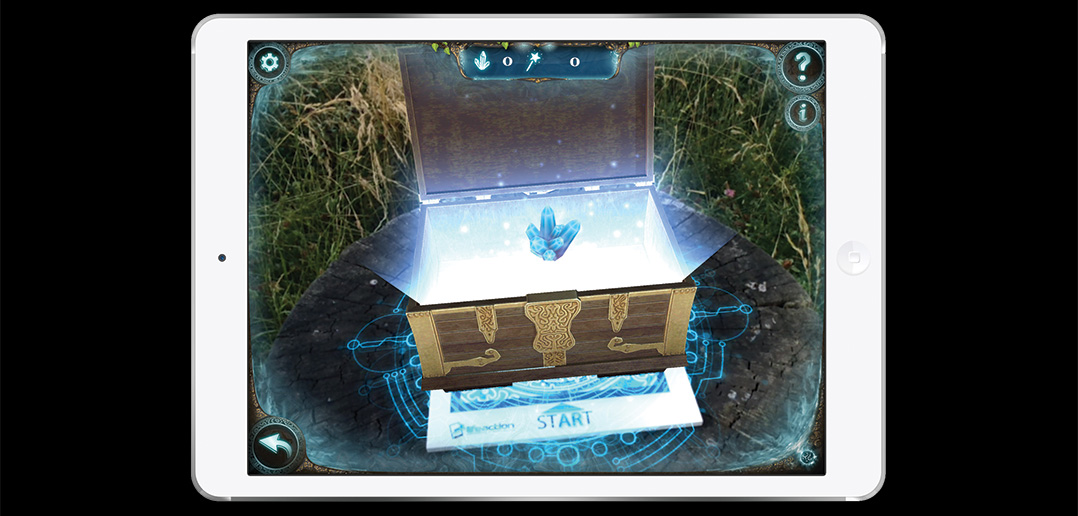
Players open a virtual treasure chest to reveal its secrets.
The increased use of AR will develop Bacon’s vision of turning The Forge: Lemont Quarries into an “outdoor recreation-focused platform.” With its content tie-ins, story-driven experiences, and opportunities for guest interaction, The Forge is an adventure park concept with big aspirations. “I want to build the Walt Disney of outdoor adventure parks,” says Bacon.
Like Disney, The Forge will likely also have multiple locations in the future. The founders intend to develop several The Forge parks. Each location will share the same surface-level components that shaped the vision for The Forge: Lemont Quarries—entertainment venues, adventure park elements, outdoor recreational experiences. But every park will be unique.
“They’ll be a function of their place and space and history,” says Bacon. “We want to take space that’s unusable for anything but this, and turn it into a restoration and education piece.”
That strikes us as a vision with a future.


